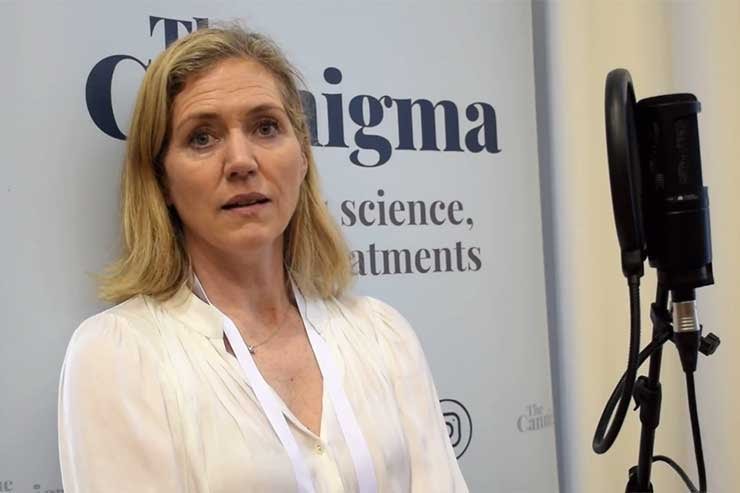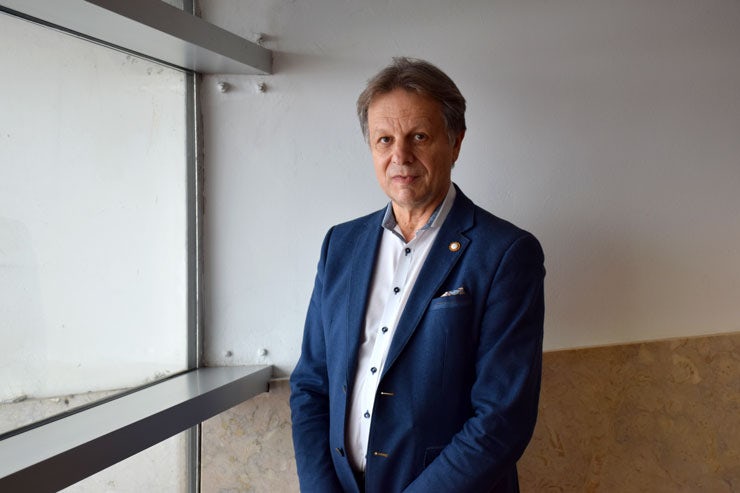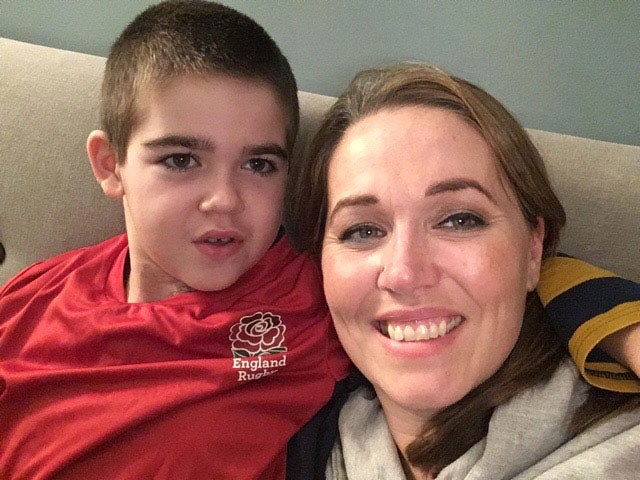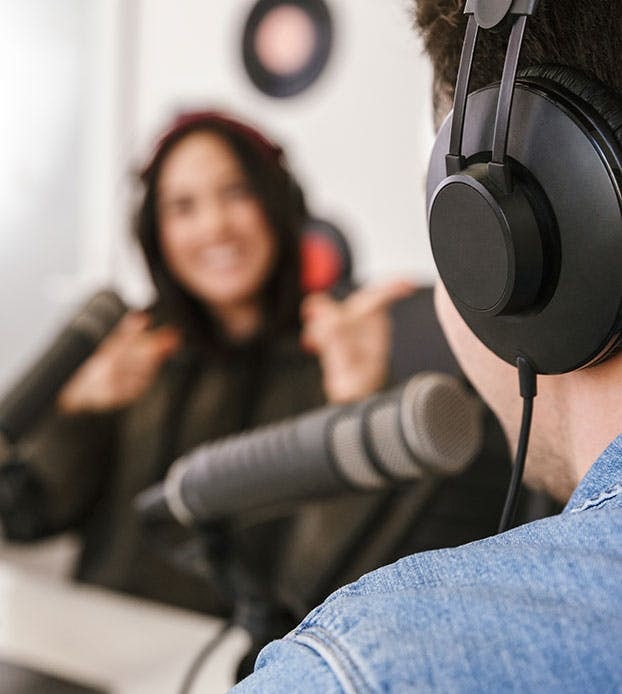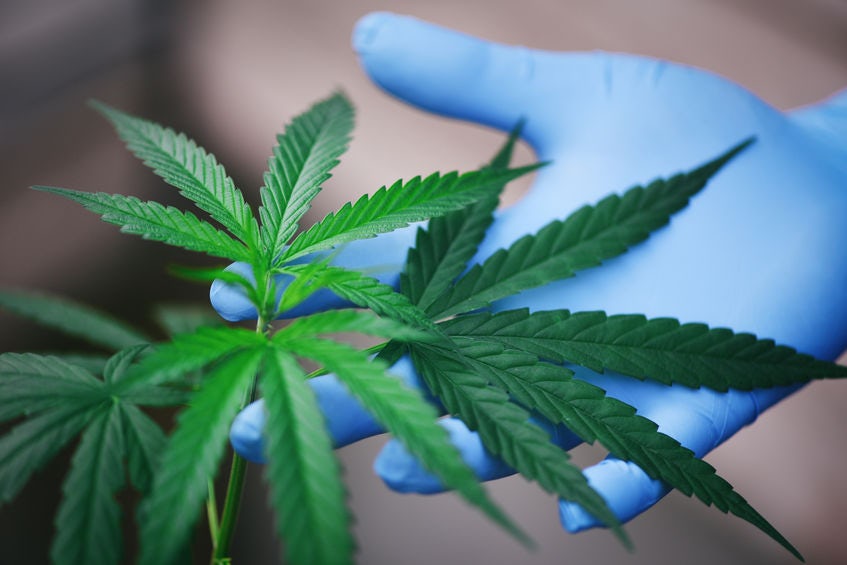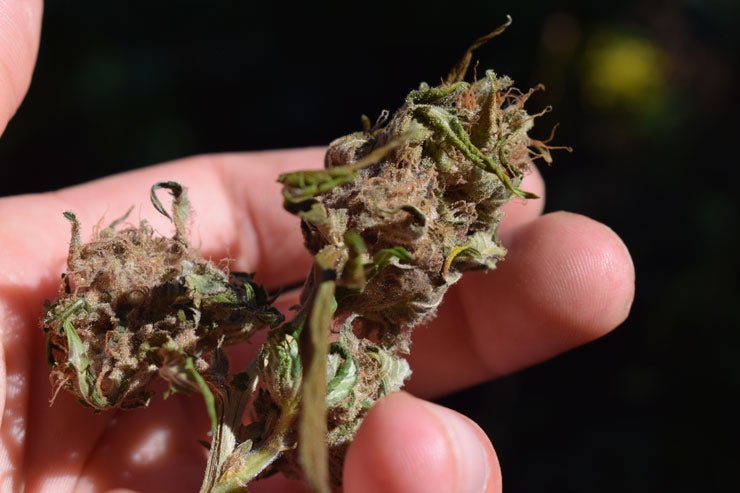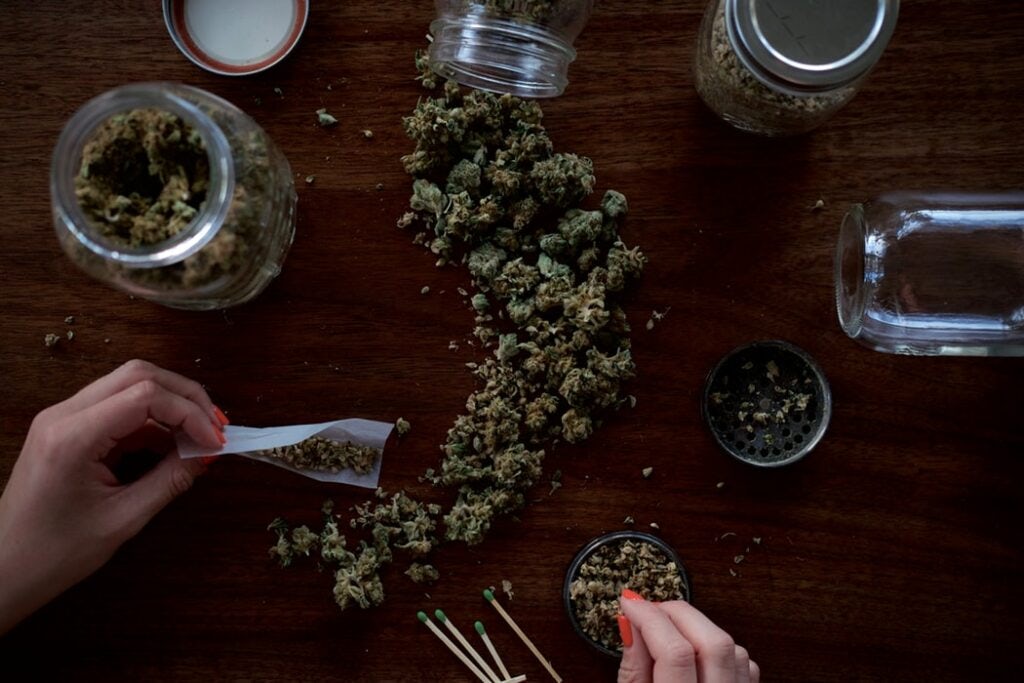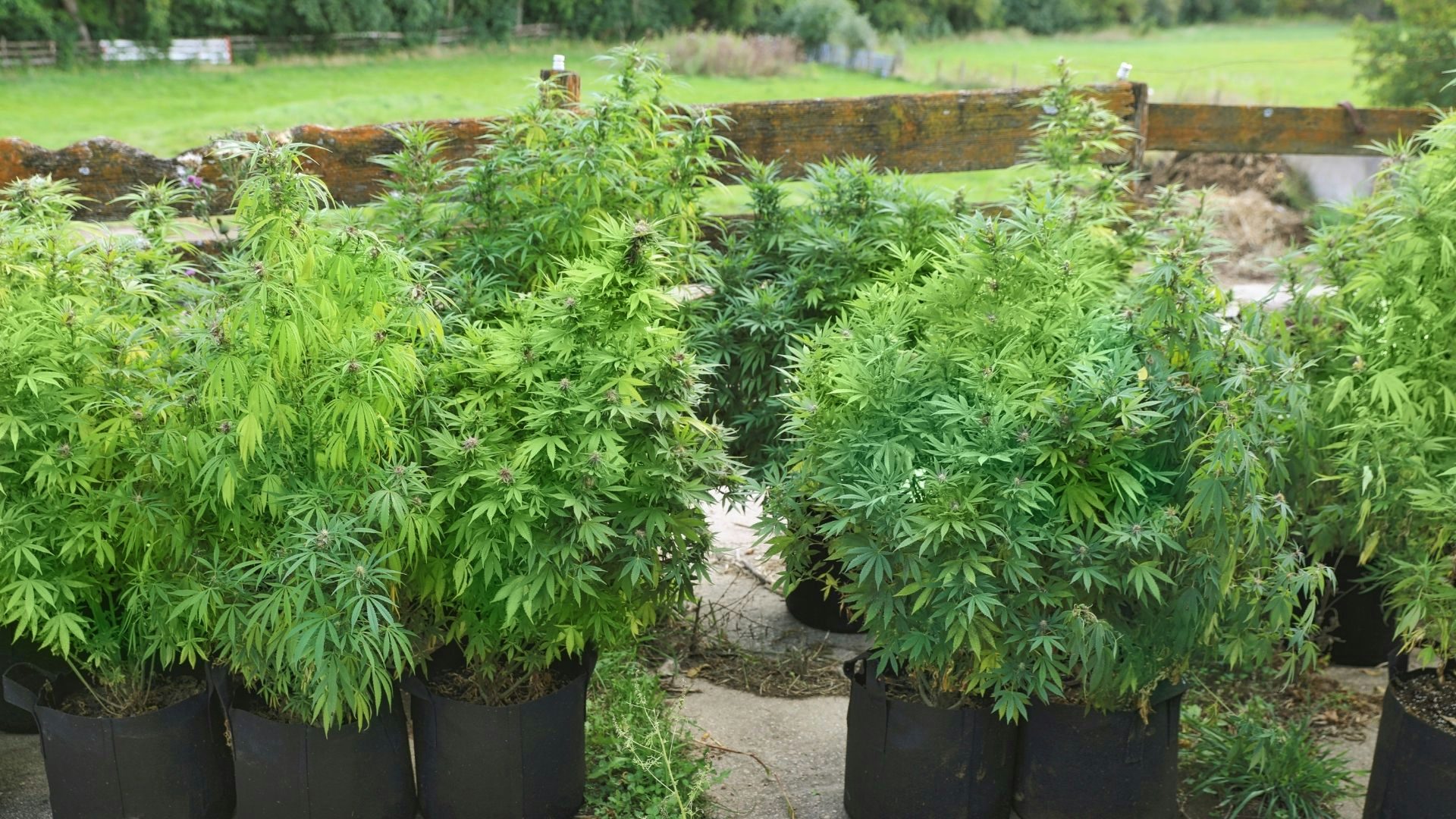When Janosch Kratz first sees a patient about medical cannabis, beyond their medical history, he wants to know how they react to other medications and even alcohol.
If someone gets drunk off half a beer, he explains on The Cannabis Enigma Podcast, he’s more likely to start them on a lower dose of cannabis. And because cannabis is most often prescribed for chronic conditions, taking it slow and getting it right is more important than immediate relief.
“To estimate what kind of patient I have in front of me is one of the most important things to know how I start dosing,” explains Kratz, who has practiced in medical cannabis clinics in Spain, Portugal, and Germany.
Listen or follow on: Apple Podcasts | Spotify | Google Play
The difference of prescribing cannabis in different countries, beyond the different regulations and availability of the medicine, often comes down to local culture and stigmas around marijuana in general.
“The stigma is there for the doctor, the stigma is there for the patient as well, and a lot of people don’t talk about it. They feel kind of guilty by using it. People with other medical drugs like opioids or benzos feel completely normal and the cannabis patient feels like he is doing something wrong,” he adds. “We need to educate them as well so they’re comfortable with that treatment.”
In the second half of the episode [19:50], Dr. Roni Sharon discusses using cannabis to treat sleep problems. Dr. Sharon explains who is a good candidate for treating sleep issues with cannabis, how he recommends taking it, and why it doesn’t work for everyone.
Produced by Elana Goldberg and Matan Weil, edited and mixed by Michael Schaeffer Omer-Man. Music by Desca.
Full Transcript
Elana Goldberg: Hi Janosch, thanks for joining us today.
Janosch Kratz: Hey, thanks for having me here with you.
Goldberg: Great to have you here. So I’d like to start off by asking you why Cannabis, how did you get into this field?
Kratz: It’s a funny question, I mean of course, I started Cann… like the first contact with it came like the, I think the fourth or fifth year of med school. I had a really good, my flat mate from Barcelona, was from California, from Salinas, so I went to visit him and spent there three months in California and I paid more attention and said wow where is this going, what is going on here? The dispensaries you had medical cannabis, which in med school nobody was talking about and I was a young doctor and I said okay this is interesting and then I came back and then the last two years I started to read a little bit about it here and there and in Spain with the help of the International Association of Cannabis Medicine observatories in Español… there are like a couple of… the only things you can find back in 2014 there was not so much easy access to all that information as well and then finished med school and decided to take a little break to think about what I’m going to do and then I started to read more and more about it and then I started to work in Kalapa clinic in Barcelona and from there I kind of kept going and kept going so this was… the beginning was super random by a visit in California seeing it and then starting to read and get through all this information.
Goldberg: Can you tell us about the Kalapa Clinic, what happens there?
Kratz: Kalapa Clinic is one of the first clinics in Europe, which have treated with the cannabinoid medicine in a controlled way. Let’s say they were different doctors alone working in some places, like Kalapa was the first clinic together and pretty is attending patients we have Mariano Garcia De Palau who works like for over 10 or 15 years with cannabinoids in its way and it’s more like a little clinic with four to five doctors now where we attend patients and try to do the best out of the situation, which is in Spain there so this is more suggesting and helping out but it’s interesting of course.
Goldberg: Can you tell us about the medical cannabis program in Spain? What’s access like, what conditions can you prescribe for?
Kratz: In Spain, the access it’s, there’s no access there’s no medical cannabis in Spain, that’s why I say in Spain, the work is limited because for the states there’s like no cannabinoids in the pharmacopeia of Spain, in the Spanish pharmacopeia. Um, just Sativex but you can just use it for MS, so it’s not an off-label use, it’s not possible. Um, but in Spain, you have cannabis clubs and people try the best out of this, there are of course oils, their oils are better controlled they are also worse controlled.
But in generally let’s say you can find oils, which are controlled in a way that you know no pesticides, no heavy metals, no fungus, and you know how much THC cannabinoid CBD is inside that is in a small space not GMP certified, products, but you have the stuff, which you can work and that is pretty much how, how it goes. This, there’s like a gray zone in the law, which allows that’s why in Spain they exist cannabis clubs.
It’s a little bit like in eh, in the Netherlands, but you need to be a member…So you need to register, and then you can get cannabis, which you can have inside a club or at your home. On the way back, for example, it’s illegal. That’s the situation a little bit weird in Spain because you have kind of recreation of cannabis but you don’t have medical.
Goldberg: Right.
Kratz: But this is open, all this, this gray zone. That’s a little bit why in the last year I moved to Germany, I mean, I’m from Germany, I went to study to Spain and I’m now back in Berlin. And in Germany, yes, we can like work completely open, with cannabinoids, we have like 42 strains, at the currently. Eh, a couple of [inaudible] Sativex you can prescribe under conditions it’s covered as well from health insurance, or it’s way more open, way more interdisciplinary to work there.
Goldberg: Right, I guess that gives you a lot more freedom, as a physician, to treat patients.
Kratz: I mean, in Kalapa, there’s a lot more knowledge about it. They know way more, they have super experienced doctors and it’s more, they know about the plant, how it works from the beginning to the end. And this is something, what for example, in Germany’s missing, a little bit both sides the same importance. Now in Germany, I can do whatever I want to do, but I can do that because I learned in Spain how to use the plants, how it works, what the endocannabinoid system is and how it works, so now it’s just modifying it and using the possibilities, but the base comes from Spain definitely.
Goldberg: Right. Interesting. We hear a lot about patients, talking dosing, and how difficult it is to kind of find the right place. Can you walk us through what you do when you have a new patient come in who either they want to try cannabis or you suggest it to them. Can you kind of walk me through the process?
Kratz: I mean, first of all, what is important of course, is that you read the background to study the patient. I mean, you need some information, frequently people come, to the doctor, or the pain therapist, and this case, for example, you don’t know them from the past. They know their GP from the past and then they come to some specialists, so you have to learn new about the patient.
So, it’s very important to, the paperwork I get from the colleagues for example, this, but this preparation of the patient. You read through it and then, for me the first consultation, the first contact with the patient, it’s very important, that’s why it should be longer, you should learn about who’s there, because, especially if you talk about the titration of it, the dosing, what you were saying, it’s very important to find out, what kind of person is this. I mean, there’s like, of course there’s and he or the she, and she know how does she normally react to drugs, and medical drugs in general, or to alcohol for example.
To see it’s, there’s people with the probability, if she’s gets with half a beer drunk, it’s, makes it more probable well, with the lower dose of cannabis or that she can handle less psychoactive properties, for example. I’m not talking about scientific, evident stuff, but it’s a little bit, it’s what you have, like this feeling when you meet somebody, you generally react more sensitive, or not about patient. And to estimate what kind of patient, I have in front of me, it’s one of the most important things to know how I start dosing at least.
If it’s, if I think that’s a person who’s going to react a little bit sensitive, or never has used cannabis before, I start really low and we have more, we have talking almost all the time about chronic conditions. So, so, you have, it’s not depending on one or two days, it’s better that you get it in the right way that to jump off if it’s a critical moment, you need to act quickly, but in this case we have the time if I suspect that it’s a sensitive patient, I start dosing step-by-step, you increase by night. If you have, uh, the psychoactive affect, is bothering you, sleep it through, so it’s a little bit easier to create that tolerance that later brings you uh, forward to a little higher dosing.
But in general, it’s this like estimate. Talk about the patient, he should explain, to look what we have here. We have to talk of course like through cardiologic diseases, psychiatric diseases, as well as in the family all that kind of stuff, this is important. Not for a first consultation if we start low, but it’s important to have it on the documentation and stuff of course and regarding somebody had a heart attack or something like a problem with the heart, we have to pay attention, of THC for example can increase the heart rate. It’s not the THC doing the harm, but we can have some tachycardia if you’re not used to to THC, and if we have that on a patient, we try, severe heart conditions can be problematic.
But there’s a couple of protocols. The most important thing is the, what I said before. Is to look, what kind of patient do I have in front of, and then it’s depending on who he is, starting lower or intermediate. And then depending on the condition, of course, what you use. One cannabinoid or the other, which proportion that depends on with the patient.
Goldberg: And do you have a kind of, you mentioned we’re here, obviously, at the conference, and you mentioned there the guidelines, that doctors work with for better or for worse at the moment. Do you have specific products that you use for specific conditions, as at least a starting point?
Kratz: I mean, we, I’ve worked in Spain, I’m working in Spain and Portugal and Germany now. We have to adapt to the conditions where we are. I just come back from two conferences in Buenos Aires and Santiago De Chile, and there are people asking you the same questions, but in their system, and we have the impression that worldwide, in every country there’s like kind of, a different stone and the different point of the way, but there’s no place that’s working completely, that’s kind of missing one or the other points.
It’s always nice to exchange generally, and to see, where’s the problem at other parts, but you always have to adapt to the conditions where you are in Germany where you are right now, I have for example access to a lot of different strains, herbals, herbs. But uh, two oils. And then you have dronabinol as a synthetic Sativex, so this is like kind of weird situation. For example, in Spain I would pretty much almost worked only with supplemental oils which, I think is like you can combine it but its a good way to work with, and in Germany I have 1000 of different strains but just two oils and its, there’s a different problem. Germany for example you just have to write on the product, the CBD and THC amount. So I have 42 different strains but I just know for each of them the CBD and the THC amount. I don’t know nothing about other terpenoids, other cannabinoids so this is 42 strains if you just have these numbers it just makes no sense.
Goldberg: So when it comes down to it it’s actually the patient that’s actually kind of going through a process of trial and error through those dozens of strains that you have access to.
Kratz: I mean in real life, yes, it’s the patient, it should be the doctor. I mean you should have enough information to decide, which is the best strain for the corresponding patient. But as the situation is in Germany, they just have to write CBD and THC as active principles on the list so you cannot have as a doctor the information you would need to be able to decide, which strain to use on which patient so it frequently is like this that the patient gets several types prescribed and you start testing, and the ones he likes the most he gets and after if you work a little bit more time with Cannabis, you start to know, this strain is a little bit more for that and this more for that. But from side, no one is obligated to write down terpene or cannabinoid profiles on the packaging and that should be, with the knowledge we have nowadays this should be like indicated there.
Goldberg: So you’ve got all this experience treating patients in you said in Berlin and Barcelona, also in Brazil-
Kratz: Portugal
Goldberg: In Portugal sorry-
Kratz: Yeah Kalapa is collaborating with Portuguese observatory, the ones who organize here or participating in the event as well so we have a couple of Portuguese patients in Kalapa as well who are just trying to reach the people who need the [inaudible].
Goldberg: Okay, so I’m interested to hear when you got this experience with a few different systems, what do you think would be the ideal system, for you as a physician and also for the patients, to make sure that access is easy and you can treat in the way that will end up with the best outcomes.
Kratz: I mean, now having worked in the Spanish and the German system I would like to have some mixed kind of thing. I mean in Spain there is more culture about this that people are worrying less about the stigma at least which is something in Germany, super straight, I mean the stigma of Cannabis is there’s not so much Cannabis culture in Germany. In Spain there’s more looking in years back, in Spain there is huge Cannabis conferences like Spannabis and stuff and very important ones from the sector in Germany Mary Jane in Berlin its nice but not comparable for example.
So I think this is a mix of both would be interesting in times of the culture behind it, because I think this is very important to have this stuff as well. So that people see, get in touch with education about what it is, what’s working with that plant. I’m not just talking about Cannabis, I’m talking about all the… its seen in a way where it is not especially medicine and we need education about it. In Germany for example you have a lot of events, which are either purely weed smoking or purely medical. And that a problem because were leaving behind the huge part of that group which are the patients. And the patients where they go to the weed congress where like everybody is smoking and you get the biggest bong and longest paper, it’s not for the patient. And to the medical one as well no. To the medical one you also don’t get because people are not going to understand, it is way to professional and way too detailed for them to understand so this a problem that the patients don’t have no way to get that because they have to feel that as well.
The stigma is there for the doctor, the stigma is there for the patient as well and a lot of people don’t talk about it and they feel kind of guilty by using it in terms of people with other medical drugs like opioids or benzos feel completely normal and the cannabis patient feels like he is doing something wrong. We need to educate them as well so they’re comfortable with that treatment.
Goldberg: And what do you do if your patients are, to kind of help them get past their stigma and get the treatment that they need?
Kratz: Its important, I think to talk about it. To have a doctor who is able to explain it in a way that the patient understands how it works in terms of side effects or how it works in general, what you should do. And it’s explaining the different that there are not so many differences, or if there are differences its more positive thing than negative ones in what we’re doing. I mean that always a [inaudible] to do if you do that talk in a good way and its what I said before, you need a good long first talk to just let people feel they’re doing the right thing and they feel comfortable with it. If you do that you can help out to get all the point of the patient as well. Like its easier in a good way.
Goldberg: And what do you do as a physician treating patients to kind of help them get past that stigma that you mentioned that they experienced?
Kratz: I think for that the most important thing as what I mentioned before is to have a good long first talk about not just about, you have to talk about medical problem, to talk what possibilities of treatment are there, I mean real factitive so as not just like you’re going to be cured tomorrow, no, it’s often like a process where you need real goals, which are reachable, is important and then to educate about how its working with side effects, with effects it can have I mean to explain a little bit to how cannabis works in our body and if we have that talk in a good way I think they are prepared and they feel comfortable.
The best example for that is the tachycardia. If I don’t tell any, or if I forget that part, or if you don’t explain well that part and you start to treat let’s say a person over 70 who has never taken cannabis and you don’t explain that its possible you can have a little acceleration of the heart for maybe 5 minutes maybe 10, its nothing to worry about, you open the window breath in, relax and it’s going to be gone its perfect. If you explain this, okay, if you don’t explain that and it happens that he gets heart beating increases, he gets nervous and say oh god what is this, why did I take this drug, everybody told me I should not have taken it and I was stupid went there took it and it starts this negative thing because you have it in your mind the first time you take it and you didn’t know about, this is normal, this can happen.
You can get panic attack and you never going to touch this medicine ever again. And it’s just one sentence, if you say look, it’s like this where it can happen, the reason it can happen, the patient is going to be like the doctor explained me this can happen it’s not so confident but I have to relax and it’s going to work. And actually it’s like this, ten minutes later you’re probably going to sit down and you feel way more relaxed with it. But this is like little important things you have to mention, but with a good first medical visit and talking about the aspects I think the patients can be mentally prepared and in society there’s education for everything and everybody need it but this is like a totally different process.
Goldberg: It’s all about education really when it all comes down to it. Thanks very much for joining us.
Kratz: Thank you very much, thank you for being here.
Ask the Doctor: Cannabis and Sleep
Michael: With me is Dr. Roni Sharon for a little section we’re calling “Ask the Doctor.” So Roni, how are you doing today?
Dr. Roni Sharon: Hey Mike, good to be here.
Michael: So what I want to talk to you about today is a question that actually keeps coming up because, well, my parents keep asking me, and that is: Can cannabis help people sleep, and in particular, older people. So, first off, is this something that you recommend cannabis for to your patients?
Dr. Sharon: I think it’s a really good question. And it’s something I come across every single day. We cannot give cannabis for sleep. Marijuana indications don’t include sleep. I practice in New York, and that’s not one of the conditions we can give it for.
Nonetheless, it’s the number one thing people use it for in my practice, but we don’t give it necessarily for sleep. And I’ll give an example. If someone has chronic pain, very often three months after starting cannabis, they’ll come to my office and they’ll say, marijuana really helps my sleep. And as a result, I have less pain. I’m moving more, I’m able to exercise more, and I feel well rested at night. And that’s something I hear all the time.
Michael: And how do they use it?
Dr. Sharon: In general, and I give recommendations for cannabis, I’ll recommend more CBD in the morning and more THC at night. And I do find that THC can significantly help people fall asleep and often stay asleep.
Now an important question with sleep is: How’s the quality of the sleep that they’re getting? For instance, if you sleep on a plane six hours, it’s probably not equivalent to you even sleeping two or three hours in your own bed.
Michael: I can attest to that.
Dr. Sharon: And there are different stages of sleep. There is early sleep, when you get woken right away and you’re awake right away. There is the deeper stages of sleep, where if someone wakes you up, you feel very groggy. And there’s a stage of sleep called REM, where you’re very often dreaming in that stage of sleep. THC in marijuana in general actually positively impact some of them and negatively impacts other parts of our sleep.
Michael: What about for somebody who doesn’t necessarily want to take THC? Either because of the side effects, dry mouth, for instance, or maybe because they just don’t want the psychotropic effects of it. Is CBD also something they can use or is that less ineffective.
Dr. Sharon: Well, I think before we get to that, we have to take a step back and find out why someone needs something to help them sleep. Sleep is one of the most integral things that we do in our lives, and it’s incredibly important. Trouble falling asleep very often, for me as a doctor, means someone has anxiety. Trouble staying asleep means they could have another condition such as sleep apnea, or something else that causes interrupted sleep.
Not feeling well rested or waking up early has its own ramifications. Why is someone taking something? Why do they need anything? And we actually use a lot of things for sleep, whether it’s NyQuil, sleeping pills, other pills, our phones to distract us, TVs, Netflix, other things. But we need to figure out why we’re not sleeping well before we get to the question of whether it will improve sleep.
Very often marijuana can help with someone’s anxiety and anxiety is a big reason. People don’t fall asleep. So as someone gets in bed, they turn off the lights and they prepare to sleep. Their mind might be racing, and that’s a big problem because when your mind is very awake, you can’t fall asleep. If marijuana can help your anxiety, it’s probably going to help you sleep.
If marijuana does put you to sleep, it might be a distraction: you’re not thinking about the things you were thinking about before. On the other hand, marijuana actually keeps people awake very often, and it’ll depend very much on what strain they’re taking in order to see if it helps them or not.
What I’ve found with my patients is that it’s a little bit of trial and error, but eventually most people find a strain of marijuana that really calms them and helps them sleep.
Michael: You said that oftentimes insomnia or sleep disturbances are a symptom of something else. Does that mean that it is necessarily a temporary solution or is it something that people use longterm?
Dr. Sharon: It’s a really great question, and the jury is still out over the long term — if marijuana is really beneficial or harmful for people’s sleep. What I can say is that I’m pretty sure we’re going to find out that it’s both. I think for some people it’s beneficial and for some people it’s harmful.
We know that cannabis reduces REM sleep. REM sleep is about a quarter of our sleep, and that doesn’t change as we get older. And with that sleep, that’s when we’re dreaming and we can actually move three parts of our body. We can move our eyes, we can move our lung muscles so we can breathe, and for men, they get erections. That part of sleep is responsible for when we dream and what we’re actually doing is we’re consolidating a lot of the memories that we had throughout the day and remembering them longterm.
The most classic example is learning how to play the piano or remembering numbers and digits. We do that in REM sleep and marijuana reduces rEM sleep, so it might negatively impact our memory in that way. At the same time, it increases our deep stage of sleep, which is like the golden grail. As we get older, we sleep for quality and we don’t get deep States sleep, and marijuana actually increases that, and that might be very beneficial in the longterm.
So it’s kind of a mixed bag.
Michael: That’s really helpful. So who’s an ideal candidate, and ideal patient for using marijuana or cannabis as a sleep aid?
Dr. Sharon: People who have found that cannabis really relaxes them and allows them good quality rest. They’re good candidates. The important thing before I recommend it long term is, first of all, to explain the risks and benefits, to look for other reasons why they have trouble sleeping and to make sure it’s not negatively impacting them in another way.
After I do that, and if they’re feeling well rested and strong and energetic in the morning, that’s a great treatment for them and they should continue that way. Other things I warn them about is sometimes there’s a little bit of a hangover in the morning if people take marijuana, but that could be tinkered with. Other things I warn people about is finding the right strain because actually some people, you know, it’s not a uniform thing. It’s very individual. Different and strains affect different people. But finding the right one will really improve someone’s quality of sleep if that’s the treatment for them.
Michael: And what about how they take it? Is there a difference between inhaling it or taking it as a tincture under the tongue or ingesting an oil through the GI tract?
Dr. Sharon: Again, it’s a little bit personalized and individual in general. I think that the vaporizer is a better way because you can really dose it exactly to how much you need.
It’s a faster onset and it leaves your body a little bit faster. It leaves a little bit less of the hangover. I recommend less edibles because it lasts in your body for longer, but the oil tincture is wonderful.
Michael: For sleep, though, wouldn’t you want something that’s going to last longer?
Dr. Sharon: Well, it depends. Most people sleep five to eight hours. The ideal is that someone will sleep seven hours, so I don’t want something that’s lasting more than six hours because I want someone to actually have everything out of this system if it impacts a negatively while they’re awake.
Michael: Thanks for joining us, Dr. Sharon.
Dr. Roni Sharon: My pleasure. Good to be here.
Sign up for bi-weekly updates, packed full of cannabis education, recipes, and tips. Your inbox will love it.


